| Author |
Message |
Harry Marinakis

|
 Posted: Sun 08 Apr, 2018 10:33 am Post subject: Leather scabbard colors Posted: Sun 08 Apr, 2018 10:33 am Post subject: Leather scabbard colors |
 |
|
THE QUESTION(S):
What are period colors for sword scabbards during the medieval period?
We have all see the variety of scabbard colors in the illuminations, but I wanted to take this question a step further: What are the colors of medieval leather dyes that would have been used to dye leather scabbards?
RESEARCH:
To answer this question, I started reviewing medieval recipes for leather dyes. The primary sources for most of my medieval leather dye recipes come from two documents:
Rosetti, Gioanventura. Plictho de larte de tentori che insegna tenger pāni telle banbasi et sede si per larthe magiore come per la commune (Instructions in the Art of the Dyers Which Teaches the Dyeing of Woolen Cloths, Linens, Cottons, and Silk by the Great Art as Well as By the Common), AD 1548
Segreti di Colori (Secrets of Color), an anonymous late 15th century manuscript that covers a wide range of coloration, including leather dyes.
Both of the above manuscripts have been translated into English, but the translations are plagued with confusing medieval jargon and undefinable terms that were merely translated word-for-word into English. All in all, there are about 100+ medieval recipes for leather dyes.
Excluded from this subject are paints and tanning methods that intrinsically produce a color, e.g., alum tanned leather.
EXPERIMENTAL ARCHEOLOGY:
I have been going through all of these recipes, one by one -- trying to decipher the medieval jargon ("...give the leather a hand..."), find the reagents ("...Orselle of Levant...") , and reproducing the dyes. So far I've successfully reproduced about 40 dye recipes. Most of the colors are fairly earthly; you can get some bright reds and yellows, but all of the other leather dye colors are fairly dull.
I did dabble a bit in trying to dye leather with fabric dyes, but this quickly proved to be futile, so I stuck with the leather dyes only.
I also did not fool with recipes that used arsenic, lead, etc.
Last edited by Harry Marinakis on Sun 08 Apr, 2018 11:56 am; edited 3 times in total
|
|
  |
 |
Harry Marinakis

|
 Posted: Sun 08 Apr, 2018 11:30 am Post subject: Posted: Sun 08 Apr, 2018 11:30 am Post subject: |
 |
|
Red - Most of the medieval leather dyes in red produce colors that are more of brick red or brownish red. It is possible to get nice bright reds (such as cherry, scarlet, ruby, vermillion, and crimson) with Brazilwood, but the dye is not wash fast at all, and fades in sunlight. Of course, pink colors are also available, as faded or washed versions of the reds.
BELOW:
A bright red leather dye made from Brazilwood @ pH = 4 with vinegar and roche alum
 Attachment: 96.84 KB Attachment: 96.84 KB
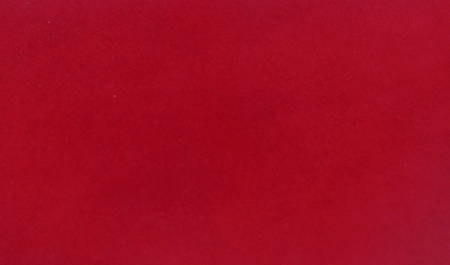
Last edited by Harry Marinakis on Mon 09 Apr, 2018 8:27 am; edited 4 times in total
|
|
  |
 |
Harry Marinakis

|
 Posted: Sun 08 Apr, 2018 11:31 am Post subject: Posted: Sun 08 Apr, 2018 11:31 am Post subject: |
 |
|
Purple - Medieval leather dyes in purple are available in shades of dark purple such as plum, eggplant, and wine.
BELOW:
A "morello" leather dye (wine color) with Brazilwood and potash
 Attachment: 79.21 KB Attachment: 79.21 KB
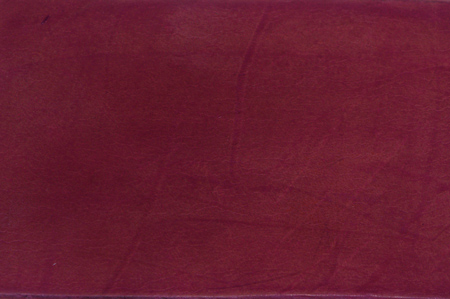
Last edited by Harry Marinakis on Sun 08 Apr, 2018 11:52 am; edited 4 times in total
|
|
  |
 |
Harry Marinakis

|
 Posted: Sun 08 Apr, 2018 11:32 am Post subject: Posted: Sun 08 Apr, 2018 11:32 am Post subject: |
 |
|
Brown - Medieval leather dyes in brown are rare, perhaps because they are so easy to make that recipes were not required. Most of the medieval leather dyes will turn brown with age. A lot of the red dyes will end up brown if not made correctly; likewise with the green dyes. Walnut makes a nice wash-fast and light-fast brown right from the start.
BELOW:
Walnut leather dye, plain and simple, nothing added
 Attachment: 62.33 KB Attachment: 62.33 KB
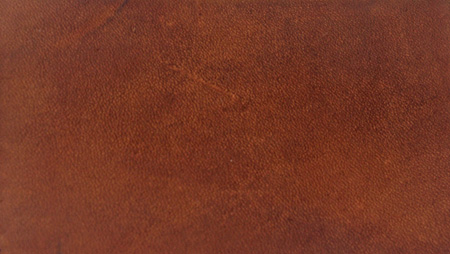
Last edited by Harry Marinakis on Sun 08 Apr, 2018 11:54 am; edited 3 times in total
|
|
  |
 |
Harry Marinakis

|
 Posted: Sun 08 Apr, 2018 11:33 am Post subject: Posted: Sun 08 Apr, 2018 11:33 am Post subject: |
 |
|
Yellow - Medieval leather dyes for yellow are available in really nice golden yellows such as honey, mustard, and butterscotch. The Old Fustic yellow dyes are not wash fast, but the Turmeric yellows are.
BELOW:
A nice bright Turmeric yellow leather dye
 Attachment: 71.29 KB Attachment: 71.29 KB
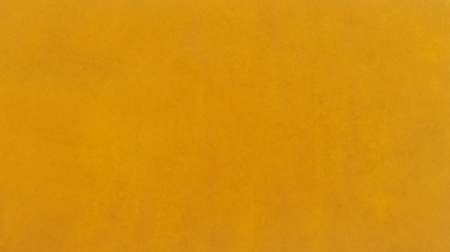
Last edited by Harry Marinakis on Sun 08 Apr, 2018 11:53 am; edited 2 times in total
|
|
  |
 |
Harry Marinakis

|
 Posted: Sun 08 Apr, 2018 11:34 am Post subject: Posted: Sun 08 Apr, 2018 11:34 am Post subject: |
 |
|
Blue - Medieval leather dyes in blue are made from indigo and woad, and produce a dark bluish slate grey. There are no bright blue leather dyes. Interestingly, none of the leather dye recipes use the fermentation vats that are used for dyeing fabric with indigo, but I'm going to try it once the weather warms up and I can maintain an outdoor urine fermentation vat.
BELOW:
A typical blue (indigo) leather dye
 Attachment: 85.67 KB Attachment: 85.67 KB

Last edited by Harry Marinakis on Mon 09 Apr, 2018 8:18 am; edited 3 times in total
|
|
  |
 |
Harry Marinakis

|
 Posted: Sun 08 Apr, 2018 11:42 am Post subject: Posted: Sun 08 Apr, 2018 11:42 am Post subject: |
 |
|
Green - Medieval leather dyes in green are very difficult to reproduce and persnickety, and all that I have been able to reproduce are olive green -- with two exceptions. A rather nice but inconsistent leaf green can be made by overdying Turmeric yellow with tiny bit of indigo. I also got an inconsistent leaf green with Buckthorn berries, but figuring out how to perfect the lake pigment has been problematic.The easiest way to get olive green is not in a recipe - but if you add just a whiff of vinagroon to a yellow dye, then you get black + yellow = olive green.
BELOW:
An olive green lake pigment from Buckthorn berries. Very difficult to separate the green lake pigment from the solution. The solution dyes leather brown.
 Attachment: 95.08 KB Attachment: 95.08 KB
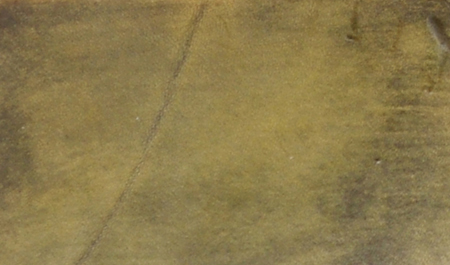
Last edited by Harry Marinakis on Mon 09 Apr, 2018 8:12 am; edited 5 times in total
|
|
  |
 |
|
Jonathan Hodge
Location: East Tennessee Joined: 18 Sep 2015
Posts: 132
|
 Posted: Sun 08 Apr, 2018 11:45 am Post subject: Posted: Sun 08 Apr, 2018 11:45 am Post subject: |
 |
|
|
Harry these are great. Thanks so much for sharing these results.
|
|
  |
 |
Harry Marinakis

|
 Posted: Sun 08 Apr, 2018 11:56 am Post subject: Posted: Sun 08 Apr, 2018 11:56 am Post subject: |
 |
|
Black - The grey and black dyes used an iron-acid salt to produce a grey (one coat of dye) or very dark gun metal grey color (multiple coats) but not a true black. A common "medieval dye" that is used today - known as vinagroon (not vinegroon) - is not in any of the medieval recipe books, but it works by a similar principle as the recipes in Plictho and Segreti. Vinagroon provides a really solid black-black that is truly wash fast, rub fast, and light fast.
Grey - See above "Black"
BELOW:
Grey (from Roman Vitriol aka Green Vitriol) and vinagroon black
 Attachment: 95.3 KB Attachment: 95.3 KB
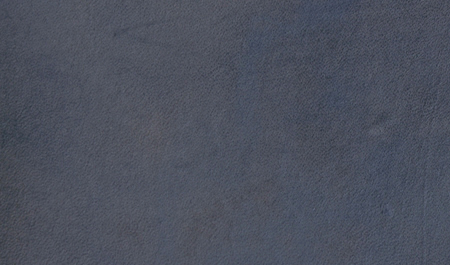
 Attachment: 25.89 KB Attachment: 25.89 KB

Last edited by Harry Marinakis on Mon 09 Apr, 2018 8:15 am; edited 3 times in total
|
|
  |
 |
Harry Marinakis

|
 Posted: Mon 09 Apr, 2018 7:49 am Post subject: Posted: Mon 09 Apr, 2018 7:49 am Post subject: |
 |
|
Here is the spectrum of reds that you could expect from period leather dyes
 Attachment: 99.75 KB Attachment: 99.75 KB
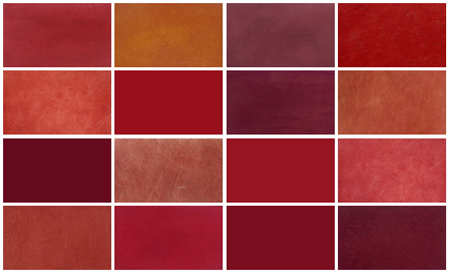
|
|
  |
 |
Harry Marinakis

|
 Posted: Mon 09 Apr, 2018 7:53 am Post subject: Posted: Mon 09 Apr, 2018 7:53 am Post subject: |
 |
|
Here is the spectrum of yellows that you can get with period leather dyes
 Attachment: 100.19 KB Attachment: 100.19 KB

Last edited by Harry Marinakis on Mon 09 Apr, 2018 8:03 am; edited 1 time in total
|
|
  |
 |
Harry Marinakis

|
 Posted: Mon 09 Apr, 2018 8:02 am Post subject: Posted: Mon 09 Apr, 2018 8:02 am Post subject: |
 |
|
Greens are tough to get. Consider this a work in progress. Here is the spectrum of green period leather dyes that I have been able to get so far. Not very impressive work....
 Attachment: 78.87 KB Attachment: 78.87 KB
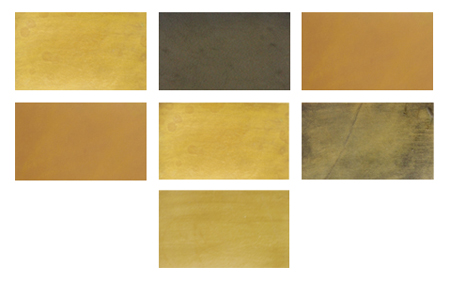
|
|
  |
 |
Dan Kary

|
 Posted: Mon 09 Apr, 2018 12:07 pm Post subject: Posted: Mon 09 Apr, 2018 12:07 pm Post subject: |
 |
|
Wow this is great! Can you clarify with browns? You seem to imply that the recipes were rare but that the color was common. Is this correct?
Last edited by Dan Kary on Wed 11 Apr, 2018 11:17 am; edited 1 time in total
|
|
  |
 |
|
Scott Kowalski
Location: Oak Lawn, IL USA Joined: 24 Nov 2006
Posts: 818
|
 Posted: Mon 09 Apr, 2018 12:30 pm Post subject: Posted: Mon 09 Apr, 2018 12:30 pm Post subject: |
 |
|
Thank you for posting this Harry. I know that sometimes I get to caught up in the weapon aspect of this and forget about things like this. Not only useful for scabbards but for any other type of leather you might want to include with a complete kit.
Chris Landwehr 10/10/49-1/1/09 My Mom
|
|
  |
 |
Harry Marinakis

|
 Posted: Mon 09 Apr, 2018 4:37 pm Post subject: Posted: Mon 09 Apr, 2018 4:37 pm Post subject: |
 |
|
BROWNS - There aren't any recipes in the Plictho or Segreti that are specifically for making brown leather dyes.
Numerous leather dye recipes state that the dye can be used to dye leather multiple colors, but the recipes don't always specify how this can be done. For instance, reddish-brown Bloodwort root can be used to make dyes in red, pink, orange, and brown. Purple Buckthorn berries can be used to make dyes in green, yellow, and brown.
Sometimes changing the pH of the dye bath causes a change in color. Sometimes using a different mordant (e.g., tin versus roche alum) does the trick. When making Buckthorn dye, if you add potash and allow the dye to settle overnight, the solution floating on top dyes leather brown, whereas the mud that settles on the bottom dyes leather green. (The recipes don't tell you this, I had to figure it out on my own.)
A lot of dyes will turn brown with age. If you make a yellow dye from Old Fustic (Osage Orange), and then allow the dye to sit on the shelf for a couple of months, the dye will turn brown and so will the leather if you use that dye.
BELOW:
Here is a spectrum of brown colors that you can get with medieval leather dyes. There's a lot of overlap between the brown, red, and yellow dyes.
 Attachment: 165.38 KB Attachment: 165.38 KB
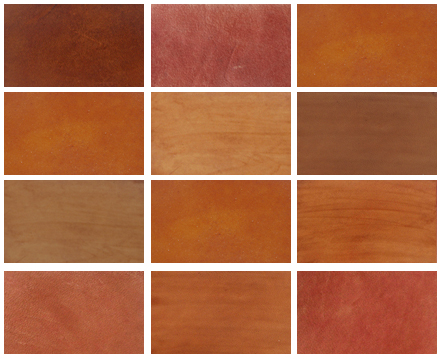
Last edited by Harry Marinakis on Mon 09 Apr, 2018 5:09 pm; edited 2 times in total
|
|
  |
 |
Harry Marinakis

|
 Posted: Mon 09 Apr, 2018 4:47 pm Post subject: Posted: Mon 09 Apr, 2018 4:47 pm Post subject: |
 |
|
BLUES - All of the recipes for blue dyes in the Plictho and Segreti are from indigo and woad. The blues are very dark, nothing bright or exciting. I found by accident that you can get a dark gun metal blue from vinagroon - if you soak the leather in vinagroon then you get black. But if you paint one or two coats of vinagroon topically, then you get gun metal blue, much like indigo.
Consider this a work in progress, I'm not done with the blues yet.
BELOW:
The spectrum of of blue leather dyes - indigo in lye, indigo in vinegar, topical vinagroon
 Attachment: 40.99 KB Attachment: 40.99 KB

Last edited by Harry Marinakis on Mon 09 Apr, 2018 5:03 pm; edited 1 time in total
|
|
  |
 |
Harry Marinakis

|
 Posted: Mon 09 Apr, 2018 5:00 pm Post subject: Posted: Mon 09 Apr, 2018 5:00 pm Post subject: |
 |
|
BLACK & GREY - These colors are mostly derived from iron-based recipes, either iron-tannin reactions, or a manufactured acid-metal salts from iron & tannin with an acid. Most of these recipes use Green Vitriol (ferrous (Fe2+) sulfate (FeSO4)). These recipes make dyes that are light grey and dark grey, but not a true black.
Vinagroon is made by dissolving iron in vinegar - it is a manufactured metal salt dye. Initially the immature dye is grey in color. Let it sit for a month, open to the air, and it oxidizes to a rust color. When leather is soaked in the mature dye for several hours, the leather turns black-black-black, through and through, wash fast, rub fast, sun fast.
BELOW:
Vinagroon (soak), Six coats of green vitriol dye, one coat of green vitriol dye
 Attachment: 44.51 KB Attachment: 44.51 KB

|
|
  |
 |
Harry Marinakis

|
 Posted: Mon 09 Apr, 2018 5:16 pm Post subject: Posted: Mon 09 Apr, 2018 5:16 pm Post subject: |
 |
|
Here's a freebee for you:
HARRY'S RECIPE FOR WALNUT DYE
Green walnuts should be collected in September or October, before a nut forms inside. These green walnuts will rot quickly, so use them promptly or put them in the freezer. California has a large walnut industry, so you can also purchase green walnuts from May through July. In the northeastern United States, fresh green walnuts can be collected in late September and early October. There are approximately 10 green walnuts per pound, which will make about 250 ml of dye.
To make a walnut dye, break up the green walnuts, boil them, and then strain off the solids. That’s it!
Smash the green walnuts with a hammer to break them open. Then it is easy to break them apart with your fingers and tear them into 1/4-inch to 1/2-inch chunks. Wear protective clothing and gloves for this task, because the clear walnut juice appears harmless but as it oxidizes to dark brown it will stain your clothes and hands. Stained fingers and fingernails will remain brown for several weeks, and - No! - you cannot wash it off. You will look like you've been digging at your ass. Wear rubber gloves.
The meat of the green walnut is a white and green, and a nut will not have formed yet. (It is okay to use green walnuts even if a nut has started to form.) Over time, the meat will start to oxidize brown. Throw the walnut chunks into a pot, and then add 2 ml of water for every gram of green walnut.
Boil the walnuts for two hours, and then strain off the solids. Reduce the brown dye bath to 1 mL for every gram of green walnut that you used in the beginning.
Green walnut dye is very strong, and does not require a mordant. The dyeing results are variable depending on the leather and the duration of the soak. Some leathers dye dark brown in an hour or two, other leathers may not dye well at all; I believe the latter has something to do with the specific modern tanning process of various leathers.
To obtain even darker browns (almost black), add a small amount of vinagroon to the walnut extract (e.g., a 1/8 teaspoon of vinagroon for every 100 ml of walnut extract). If that's not dark enough, add another 1/8 tsp of vinagroon.
Always make your dye fresh, and make only as much as you need for that day. Natural dyes do not store very well.
 Attachment: 89.31 KB Attachment: 89.31 KB
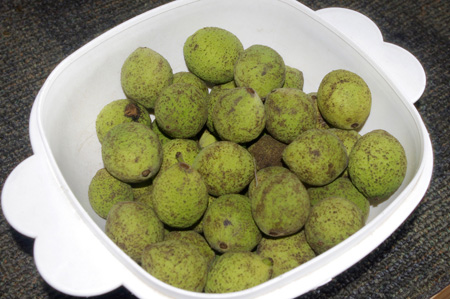
 Attachment: 78.14 KB Attachment: 78.14 KB
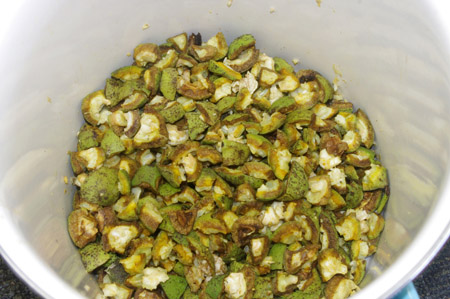
 Attachment: 139.31 KB Attachment: 139.31 KB
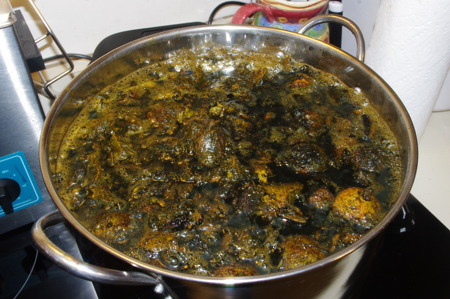
 Attachment: 86.09 KB Attachment: 86.09 KB
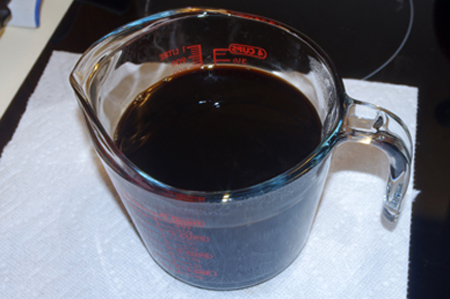
Last edited by Harry Marinakis on Mon 09 Apr, 2018 5:43 pm; edited 4 times in total
|
|
  |
 |
Harry Marinakis

|
 Posted: Mon 09 Apr, 2018 5:28 pm Post subject: Posted: Mon 09 Apr, 2018 5:28 pm Post subject: |
 |
|
Here's another freebee for you:
HARRY'S RECIPE FOR VINAGROON
Vinagroon is a solution of iron acetate. It is not a true “dye” (but we will it call it that anyway). Vinagroon changes the color of leather to black through a chemical reaction. Vinagroon is most easily made by soaking (dissolving) steel wool in acetic acid (vinegar) for a couple of weeks, and then allowing the solution the mature (oxidize) for another couple of weeks.
Iron (Fe) reacts with acetic acid (CH3COOH) to form iron acetate and hydrogen gas (H2).
Vinagroon can be made by dissolving about 12 grams (about 1-1/4 pads) of degreased #0000 steel wool in 1 gallon of 5% household white vinegar. Alternatively, 6% cleaning vinegar may be used instead.
Degrease the steel wool by washing it with dishwashing soap and rinsing well. Place the steel wool into the vinegar. Leave the cap cracked to allow the hydrogen gas to escape.
Initially the steel wool will sink to the bottom, but then will start floating when hydrogen gas is produced and bubbles get trapped in the steel wool. As the reaction slows, the steel wool will sink again. Most of the steel wool will dissolve in about a week. You want a saturated vinagroon solution, so if all of the steel wool dissolves then add some more and wait another couple of weeks. The final saturated solution will be a clear, grey in color, and there should be a little bit of undissolved steel wool on the bottom. The vinagroon has to mature in order to get best results -- Leave the vinagroon open to air for a few weeks and wait for it to rust.
Once the vinagroon solution has been used to dye leather, the solution will turn black. Save this black solution, because it can be used over and over again.
Vinagroon is acidic (pH = 4), so the leather should be washed and neutralized after dyeing. Vinagroon is very colorfast, so you will not wash out the color. A neutralizing solution can be prepared by dissolving a few tablespoons of bicarbonate (baking soda) in warm water. Soak the leather in the bicarbonate solution for 10 minutes, and agitate the solution frequently. Finally, remove the leather from the neutralizing solution and rinse well with tap water.
You can make a gallon of vinagroon and it lasts forever, will not spoil, and gets better with age.
Vinagroon will dull any other color, so if you're making other dyes then keep the vinagroon pots and utensils away from the other colors.
 Attachment: 122.26 KB Attachment: 122.26 KB
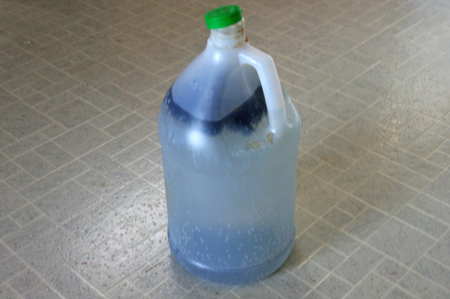
 Attachment: 130.9 KB Attachment: 130.9 KB
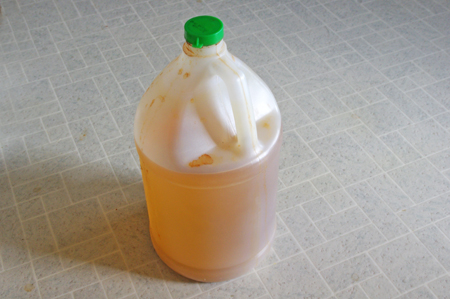
|
|
  |
 |
|
Mark Tan
|
 Posted: Mon 09 Apr, 2018 6:41 pm Post subject: Posted: Mon 09 Apr, 2018 6:41 pm Post subject: |
 |
|
|
This is great! I usually use pre dyed leather for my projects but now i know what shades to look for.
|
|
  |
 |
|
|
You cannot post new topics in this forum
You cannot reply to topics in this forum
You cannot edit your posts in this forum
You cannot delete your posts in this forum
You cannot vote in polls in this forum
You cannot attach files in this forum
You can download files in this forum
|
All contents © Copyright 2003-2025 myArmoury.com — All rights reserved
Discussion forums powered by phpBB © The phpBB Group
Switch to the Basic Low-bandwidth Version of the forum
|

